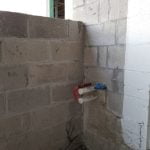When it comes to tax season, many homeowners are left wondering: where on my tax return do I claim home improvements? The answer to this question can potentially lead to significant savings for those who have invested in their properties. Understanding the importance of claiming home improvements on your tax return is crucial for maximizing deductions and credits that you may be entitled to.
Home improvements encompass a wide range of upgrades made to enhance the value, efficiency, or comfort of your residence. Renovations such as adding a new roof, remodeling a kitchen, or installing energy-efficient windows can all qualify as home improvements for tax purposes. These expenses can add up quickly, making it essential to know how to properly report them on your tax return.
Distinguishing between deductions and credits is key when claiming home improvements on your tax return. Deductions reduce your taxable income, while credits provide a dollar-for-dollar reduction of the taxes you owe.
Knowing the difference between these two tax benefits will help you maximize your savings when reporting home improvement expenses. In the following sections, we will delve into where and how to report these costs on Schedule A and Form 5695, along with tips for avoiding common mistakes and maximizing deductions.
Definition of Home Improvements
When it comes to claiming home improvements on your tax return, it’s crucial to understand what exactly qualifies as a home improvement in the eyes of the IRS. Home improvements are defined as any enhancements made to your primary residence that increase its value, prolong its useful life, or adapt it to new uses. This can include renovations like adding a new roof, installing energy-efficient windows, remodeling a kitchen, or even adding a swimming pool.
To ensure that your home improvement expenses are eligible for tax benefits, it’s important to distinguish them from regular repairs and maintenance costs. While repairs simply restore something to its original condition, improvements add value or extend the lifespan of your property. For example, fixing a leaky faucet would be considered a repair, while replacing the entire plumbing system would qualify as an improvement.
To determine where on your tax return you can claim home improvements, you’ll need to differentiate between deductions and credits. Deductions reduce your taxable income by subtracting eligible expenses from it, while credits provide a dollar-for-dollar reduction of the taxes you owe. Understanding this difference is essential for maximizing your tax savings when reporting home improvement expenses on your return.
- Home improvements must be reported on Schedule A of Form 1040 if you itemize deductions
- Eco-friendly home improvements that qualify for residential energy credits should be claimed on Form 5695
- Keeping detailed documentation and receipts of all home improvement costs is crucial for supporting your claims in case of an IRS audit
Deductions vs Credits
When it comes to tax benefits for home improvements, it’s essential to understand the distinction between deductions and credits. Deductions are amounts you can subtract from your taxable income, thereby reducing the amount of income that is subject to taxation. On the other hand, tax credits directly reduce the amount of tax you owe. Knowing when and how to utilize these different mechanisms can significantly impact your overall tax liability.
Deductions for Home Improvements
Typically, home improvement expenses are deductible if they qualify as a capital expense that adds value to your property or prolongs its useful life. These deductions are claimed on Schedule A of your tax return under the category of “Home Mortgage Interest and Other Investment Interest.” However, not all home improvements are eligible for deduction. For example, repairs that simply maintain the property in its current state do not usually qualify.
Tax Credits for Eco-Friendly Home Improvements
Another way homeowners can benefit from home improvements on their tax return is through tax credits. Specifically, there are residential energy credits available for eco-friendly upgrades like installing solar panels or energy-efficient appliances. These credits can provide a dollar-for-dollar reduction in your tax bill, making them a valuable incentive for environmentally-conscious improvements. To claim these credits, taxpayers must complete Form 5695 and submit it along with their tax return.
Understanding the nuances between deductions and credits for home improvements is crucial in maximizing your tax savings. By taking advantage of these opportunities to offset the costs of improving your home, you can not only enhance your property but also potentially lower your overall tax liability. Keeping meticulous records and consulting with a tax professional can help ensure that you accurately claim these benefits on your tax return.
Schedule A
When it comes to claiming home improvements on your tax return, knowing where and how to report these expenses is crucial. Home improvement expenses can often result in tax deductions or credits, ultimately reducing the amount of taxes you owe or increasing your refund. Schedule A of your tax return is where you will typically report home improvement expenses as itemized deductions.
Itemizing Deductions
To claim home improvement expenses on Schedule A, you must itemize your deductions instead of taking the standard deduction. This means listing out all of your eligible expenses, including mortgage interest, property taxes, and any other deductible costs, such as home improvements. Make sure to keep accurate records and receipts for all home improvement expenses to support your claims.
Reporting Home Improvement Expenses
On Schedule A, you will report your home improvement expenses under the section for “Interest You Paid.” This includes not only mortgage interest but also any points paid on a new mortgage or refinancing. In addition, you can include expenses related to home improvements, such as energy-efficient upgrades, in this section.
Be sure to follow the IRS guidelines for what qualifies as a deductible home improvement expense and provide detailed documentation when filing your taxes. Remember that claiming legitimate home improvements can lead to significant tax savings and even potential refunds from the IRS.
Form 5695
Making eco-friendly home improvements not only benefits the environment but can also provide tax credits for homeowners. When it comes to claiming residential energy credits for these eco-friendly upgrades on your tax return, Form 5695 is the key document you’ll need to familiarize yourself with. This form allows you to claim various energy-efficient improvements made to your primary residence, such as solar panels, energy-efficient windows, and geothermal heat pumps.
Form 5695 is utilized by taxpayers who are looking to take advantage of the Residential Energy Efficient Property Credit. This credit allows you to claim up to 26% of the cost of certain renewable energy systems installed in your home.
It’s important to note that these systems must meet specific requirements outlined by the IRS in order to qualify for the credit. By correctly completing Form 5695 and including it with your tax return, you can potentially reduce your tax liability while also investing in a more sustainable living space.
One common mistake that taxpayers make when claiming residential energy credits on Form 5695 is failing to keep detailed records of their eco-friendly home improvements. To support your claims and ensure accuracy in case of an audit, it’s essential to maintain receipts, invoices, and any other relevant documentation related to the purchases and installation of these energy-efficient systems.
By staying organized and thorough in your record-keeping practices, you can confidently claim the credits you’re entitled to on your tax return and enjoy both financial savings and environmental benefits from your eco-friendly home upgrades.
| Key Points | Details Provided |
|---|---|
| Residential Energy Efficient Property Credit | Claim up to 26% of the cost of renewable energy systems |
| Qualifying Systems | Solar panels, energy-efficient windows, geothermal heat pumps |
| Documentation Requirements | Maintain receipts and invoices for verification purposes |
Documentation Requirements
When claiming home improvements on your tax return, it is crucial to maintain proper documentation to support your claims. The IRS requires taxpayers to keep records of all expenses related to home improvements, including materials, labor costs, and any permits obtained for the work. These documents will serve as evidence in case of an audit or if the IRS requests further clarification regarding your claims.
One important document you should retain is a detailed invoice from the contractor who performed the home improvement work. The invoice should include a breakdown of all costs incurred, such as the cost of materials, labor charges, and any additional fees. Additionally, keep receipts for any supplies purchased for DIY projects or smaller home improvement tasks. These receipts can help substantiate your expenses and ensure you receive the appropriate deductions or credits on your tax return.
In addition to invoices and receipts, it is advisable to hold onto any contracts or agreements related to the home improvement project. This includes any written contracts between you and the contractor outlining the scope of work, timelines, payment terms, and other relevant details. Having these documents readily available can provide clarity on the nature of the home improvements conducted and demonstrate that they meet the criteria for tax deductions or credits.
| Documentation | Importance |
|---|---|
| Detailed Invoices | Breakdown of Costs |
| Receipts for Supplies | Substantiate Expenses |
| Contracts/Agreements | Evidence of Work Done |
Common Mistakes to Avoid
When claiming home improvements on your tax return, it is essential to be aware of common mistakes that taxpayers often make. Avoiding these errors can help you maximize your deductions and avoid potential issues with the IRS. Here are some key errors to watch out for:
- Not keeping proper documentation: One of the biggest mistakes taxpayers make when claiming home improvements is not keeping accurate records of their expenses. Make sure to hold onto receipts, invoices, and any other relevant documents to support your claims. Without proper documentation, you may not be able to substantiate your deductions if audited.
- Incorrectly categorizing expenses: Another common error is misclassifying expenses as home improvements when they do not qualify as such for tax purposes. It’s important to understand the difference between repairs, maintenance, and improvements. Only certain costs related to improving the value or function of your home may be eligible for a tax deduction or credit.
- Failing to claim eligible credits: Many homeowners overlook valuable tax credits available for eco-friendly home improvements. For instance, the Residential Energy Efficient Property Credit on Form 5695 allows you to claim a credit for qualifying solar panels, wind turbines, geothermal heat pumps, and more. Make sure to research all available credits and take advantage of them when applicable.
Avoiding these common mistakes can help ensure that you accurately claim home improvements on your tax return and receive the maximum benefit possible. By keeping meticulous records, correctly categorizing expenses, and claiming all eligible credits, you can optimize your tax savings while staying compliant with IRS regulations.
If you find yourself still wondering “where on my tax return do I claim home improvements,” seeking assistance from a tax professional or utilizing tax software can help guide you through the process efficiently and accurately. Remember that claiming home improvement expenses correctly can lead to significant savings on your taxes while enhancing the value and energy efficiency of your home.
Tips for Maximizing Your Deductions
When it comes to claiming home improvements on your tax return, maximizing your deductions can lead to significant tax savings. Here are some tips on how to make the most out of claiming home improvements:
1. Keep detailed records: One of the keys to maximizing your deductions for home improvements is keeping thorough records of all expenses incurred. This includes receipts, invoices, contracts, and any other documentation related to the improvement project. By having organized documentation, you can easily substantiate your claims in case of an audit.
2. Know what qualifies: To maximize your deductions, it’s important to understand what qualifies as a home improvement for tax purposes. Generally, improvements that add value to your home or prolong its useful life may be eligible for deductions. Examples include adding a new roof, installing energy-efficient windows, or renovating a kitchen or bathroom.
3. Consider timing: Timing can also play a role in maximizing your deductions for home improvements. If you have multiple improvement projects planned, strategically timing them over different tax years can help you spread out the deduction benefits. Consulting with a tax professional can help you navigate the best timing for claiming these expenses.
With these tips in mind, homeowners can take full advantage of the tax benefits available for home improvements and potentially save money on their overall tax bill. By understanding the rules around claiming these expenses and implementing strategies to maximize deductions, you can make the most out of improving your home while also benefiting from tax savings at the same time where on my tax return do i claim home improvements.
Conclusion
In conclusion, claiming home improvements on your tax return can lead to significant savings and benefits for homeowners. By understanding what qualifies as a home improvement, whether it be for energy efficiency or general upgrades, you can take advantage of deductions and credits to reduce your tax liability. Differentiating between deductions and credits is crucial in maximizing your savings, as each method offers its own set of advantages.
When it comes to reporting home improvement expenses on your tax return, Schedule A is typically the section where you would itemize these costs. Additionally, Form 5695 is essential for claiming residential energy credits for eco-friendly improvements. Keeping detailed documentation and receipts is key to supporting your claims and avoiding potential audit issues down the line.
As you navigate through the process of claiming home improvements on your tax return, remember to maximize your deductions by exploring all available options. By following the guidelines outlined in this article and seeking professional advice if needed, you can ensure that you are making the most of the tax benefits available for homeowners.
So, if you find yourself wondering “where on my tax return do I claim home improvements,” rest assured that with careful planning and attention to detail, you can optimize your tax savings while enjoying a more comfortable and efficient home environment.
Frequently Asked Questions
Can You Deduct Home Improvements on Your Tax Return?
Whether or not you can deduct home improvements on your tax return depends on the nature of the improvement. Generally, home improvements that increase the value of your home are added to the cost basis of your property and may help reduce capital gains taxes when you sell.
Where Do I Enter Home Improvements in Turbotax?
In TurboTax, you would typically enter home improvements under the section for your home’s details or expenses. You’ll need to provide information about the type of improvement, its cost, and when it was completed. TurboTax will then help you determine if you can claim any deductions related to those improvements.
Are Home Damage Repairs Tax Deductible?
Home damage repairs are usually not tax-deductible unless they were caused by a federally declared disaster in an area eligible for assistance. In such cases, you may be able to claim a casualty loss deduction on your tax return for unreimbursed repair costs due to the disaster.

I’m thrilled to have you here as a part of the Remodeling Top community. This is where my journey as an architect and remodeling enthusiast intersects with your passion for transforming houses into dream homes.





